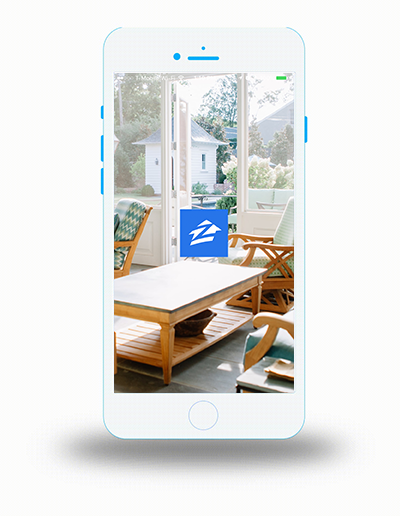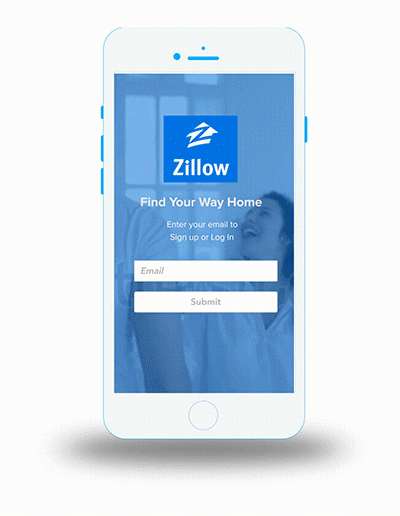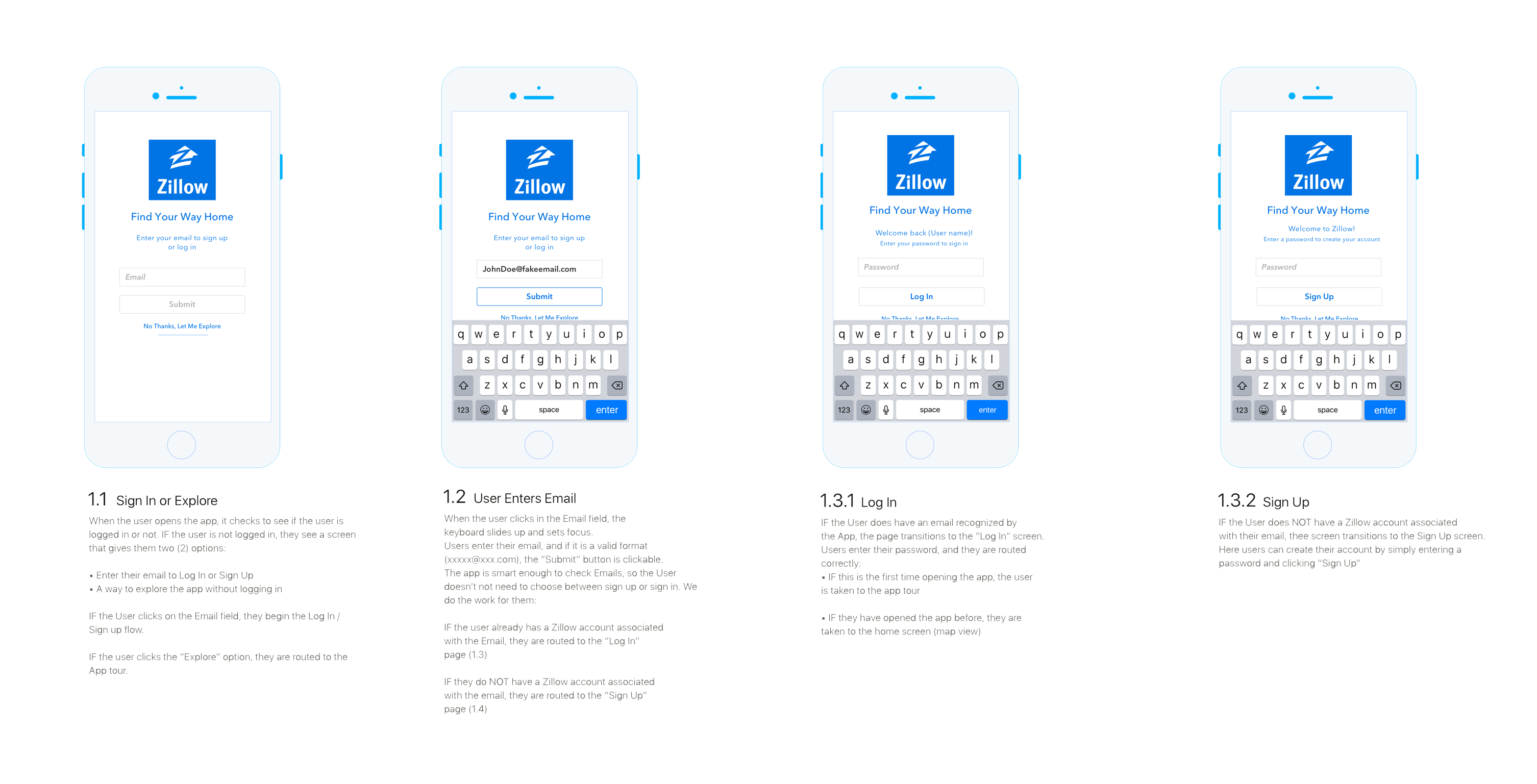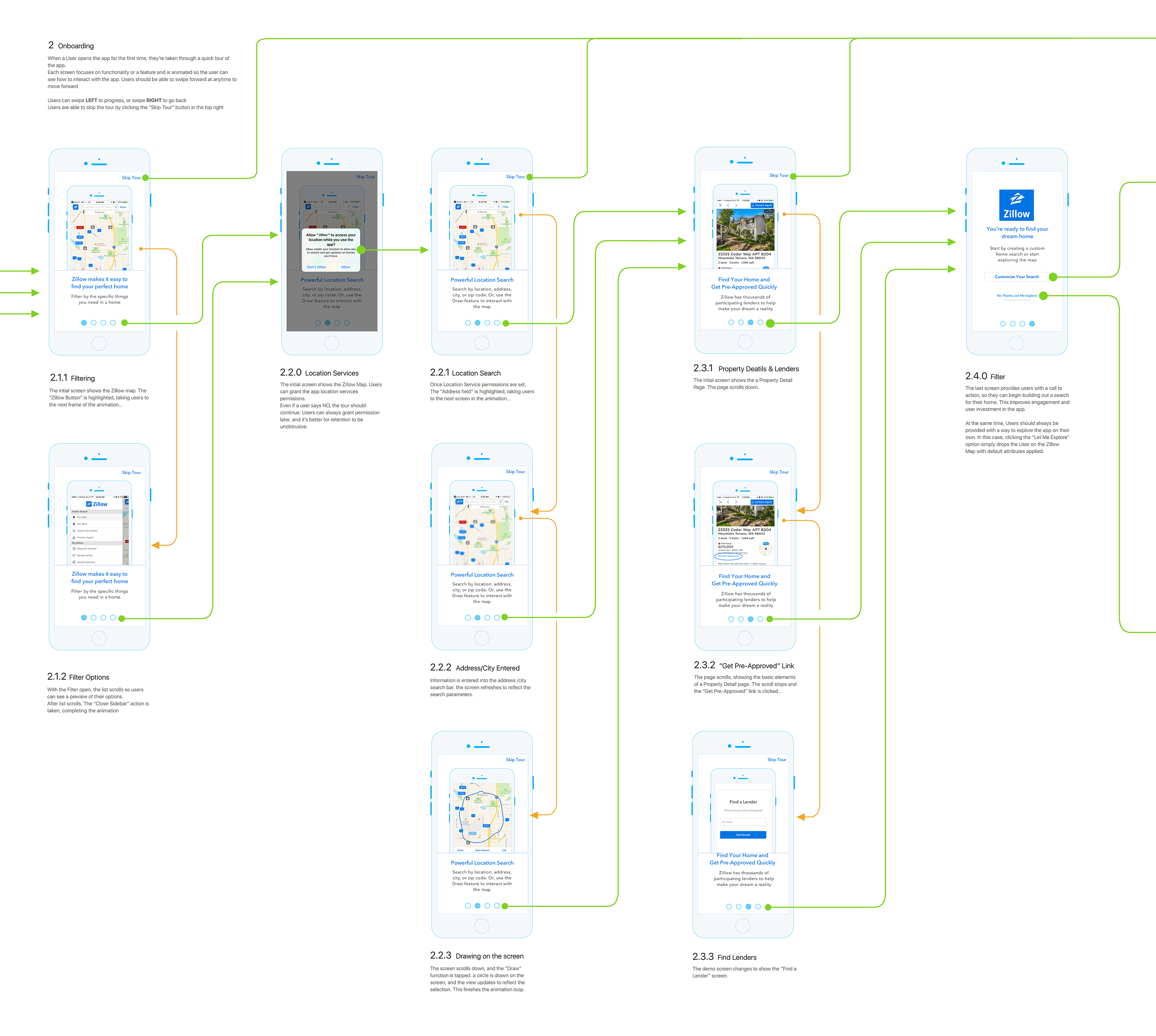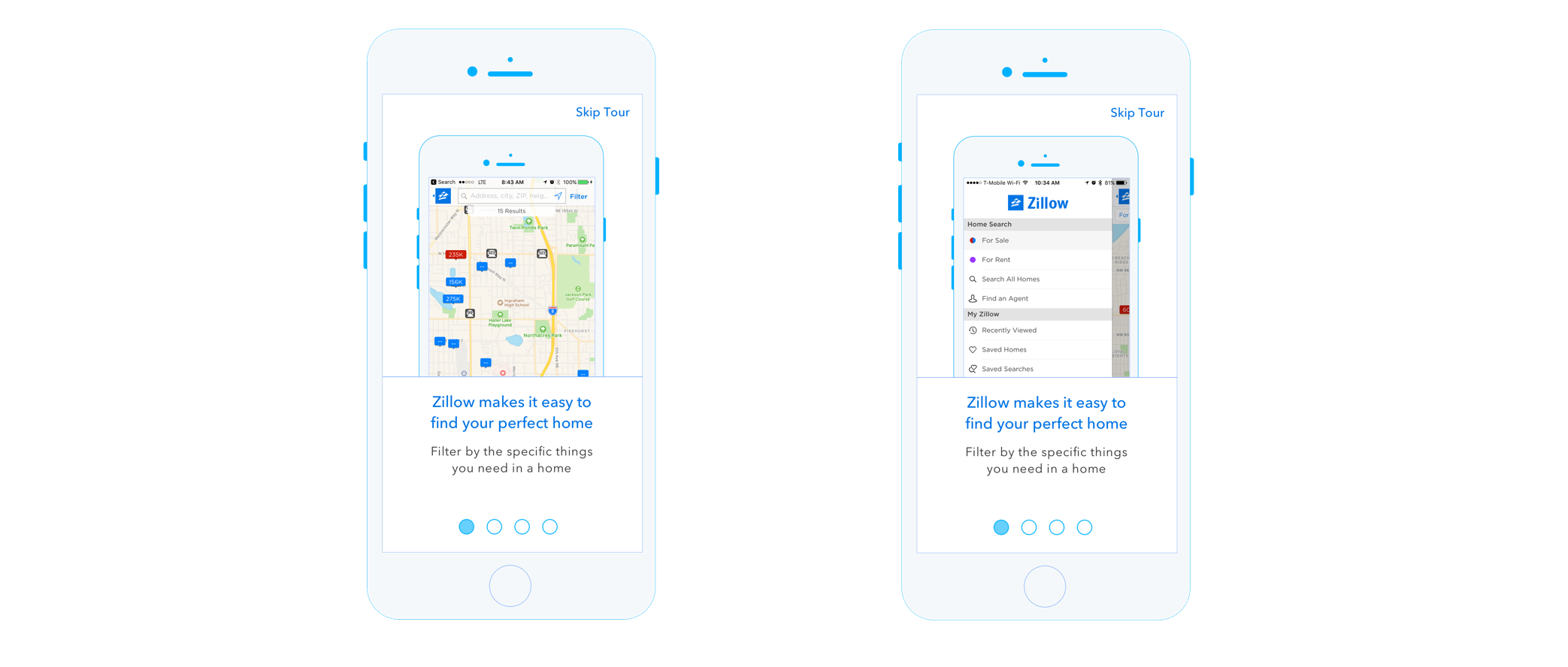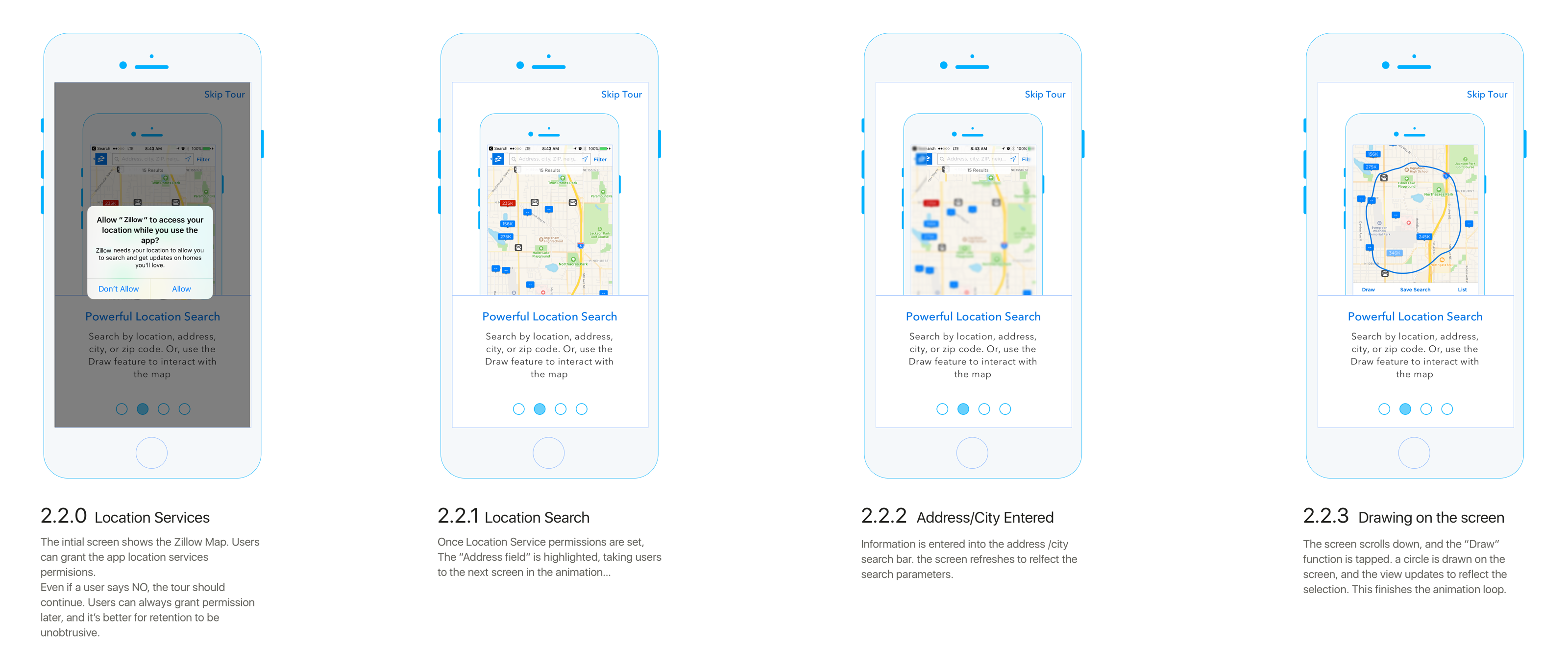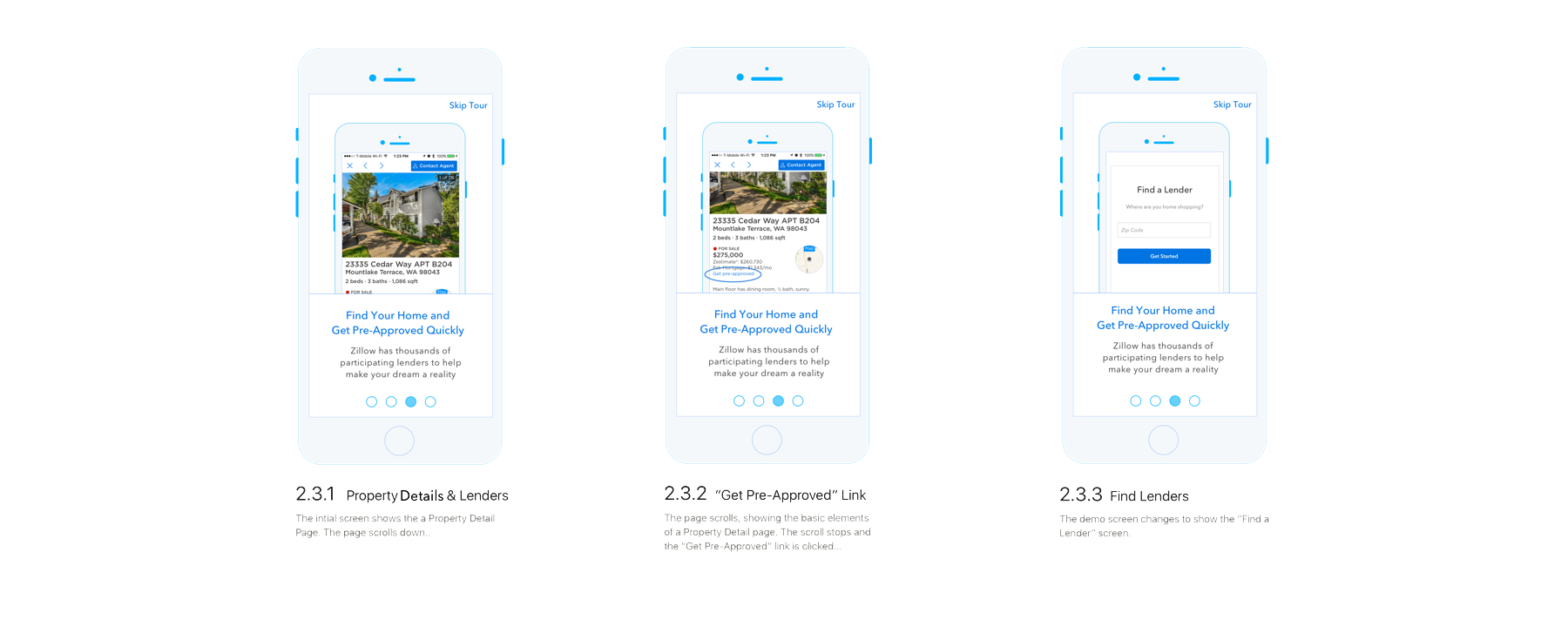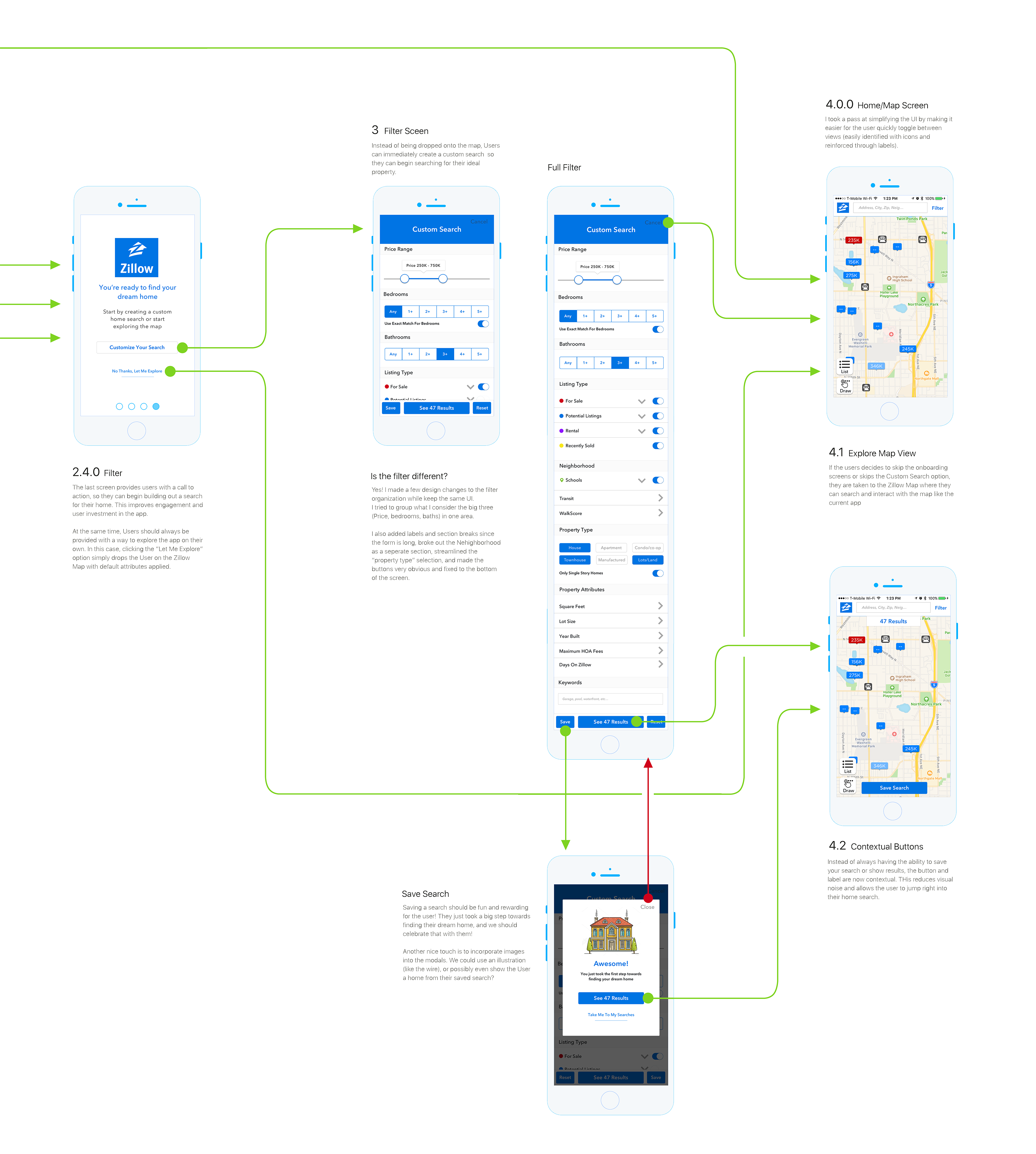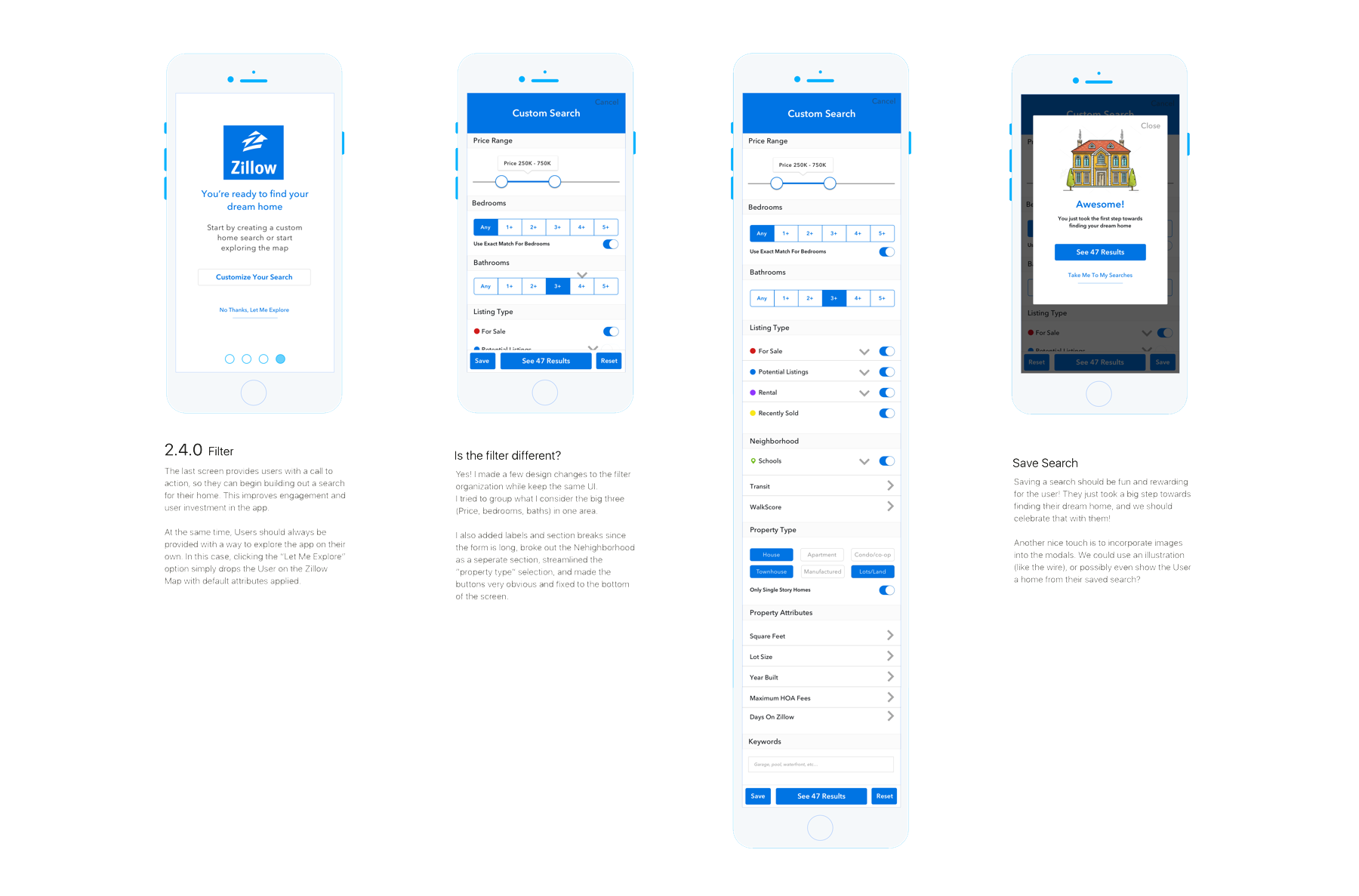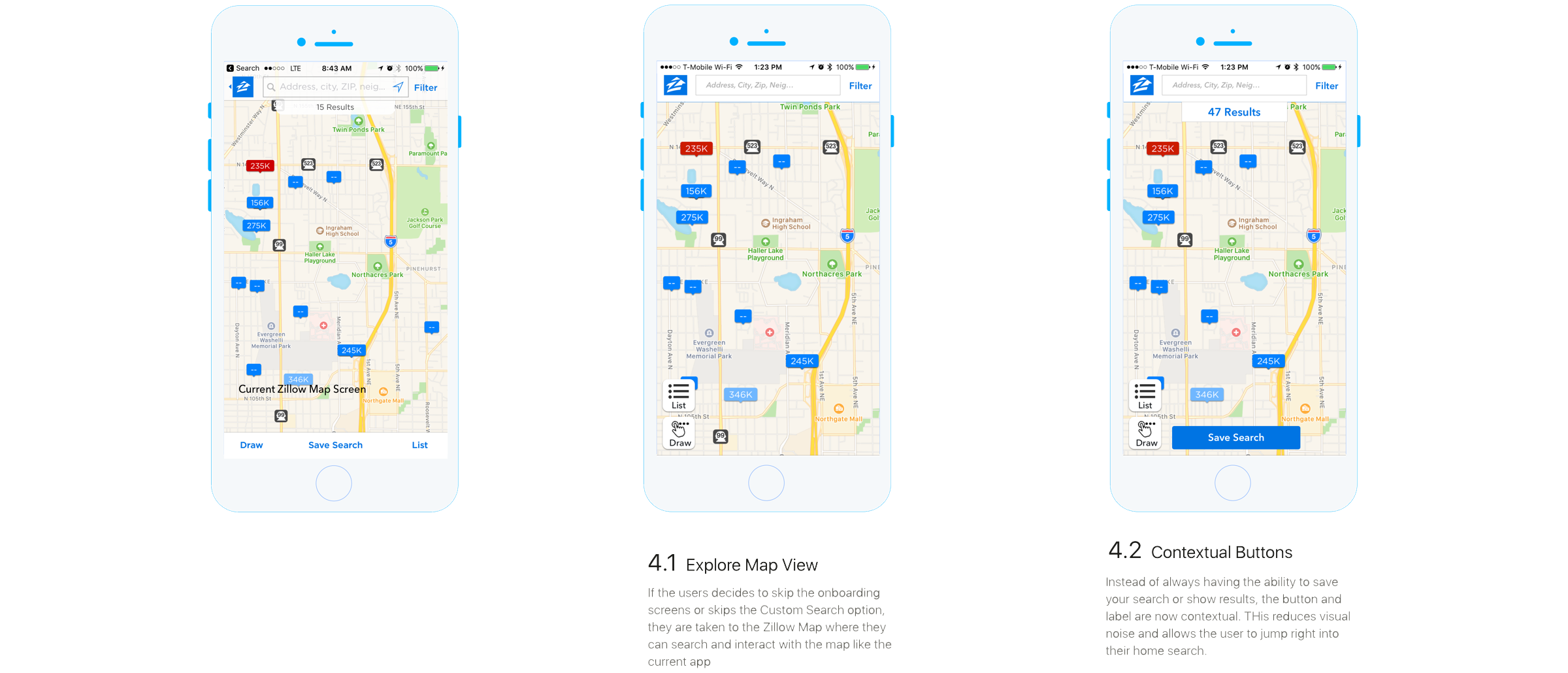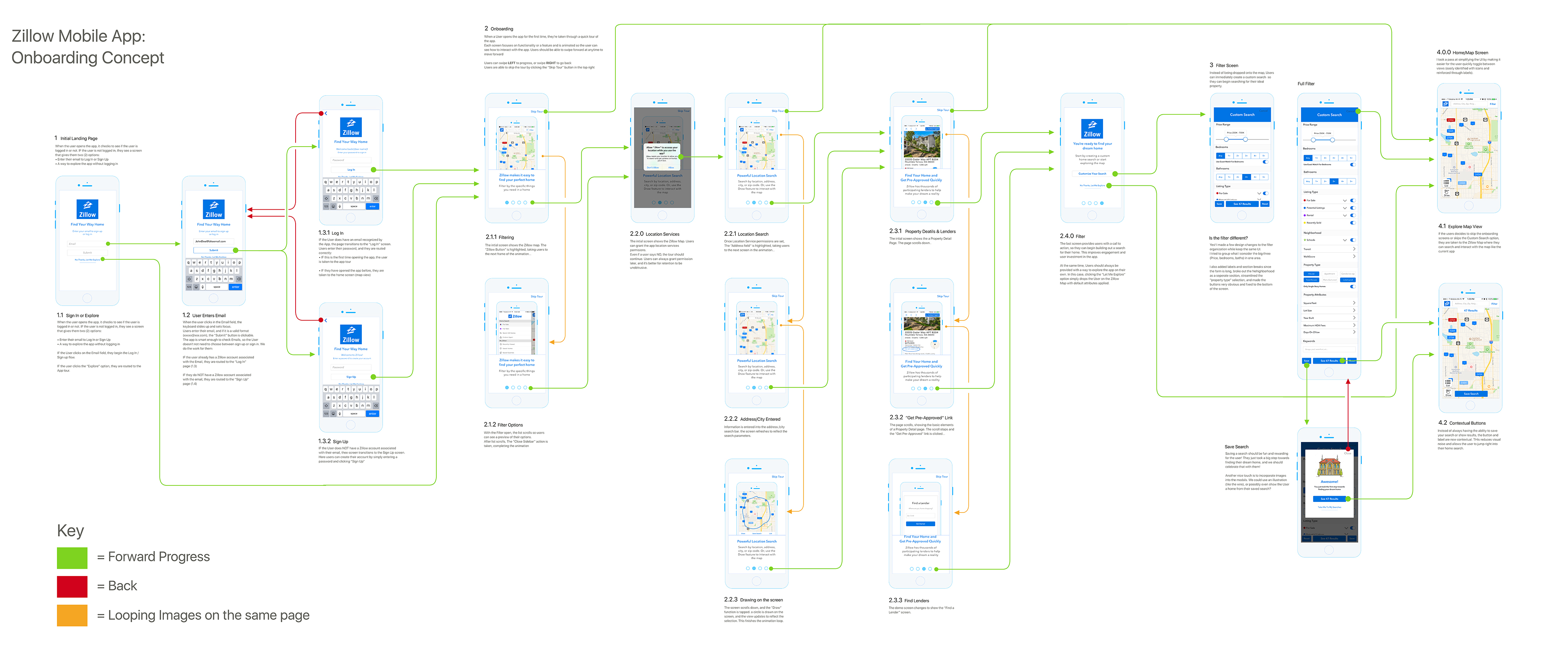
At the time I took on this project, I had been using the Zillow mobile app for about 3 years. As a platform, Zillow is great: It's quick, the listings are almost always accurate, and it incorporates financing, agents, and additional information like taxes and the neighborhood ratings.
That said, It isn’t the most intuitive of apps for new users. Many of the features are difficult to find and the lack of onboarding hinders the usability. I spent months not knowing that key features existed in the mobile version becasue the focus of the UX is tuned for the quick discovery of homes, but then lacks the depth to do anything with them.
It also always seemed like a bit of a missed opportunity to not give users a warm and instructive welcome to the Zillow mobile app, opting to drop new users directly into the map view with not a lot of guidance.
So I figured I would take a crack at designing an onboarding concept as a case study. Just to note - I did apply at Redfin in the spring of 2017, and figured this might be an interesting showcase piece. And interviewed at Zillow the following year. It may be synergy, but Zillow did eventually end up incorporating a few of the concepts I proposed here.
